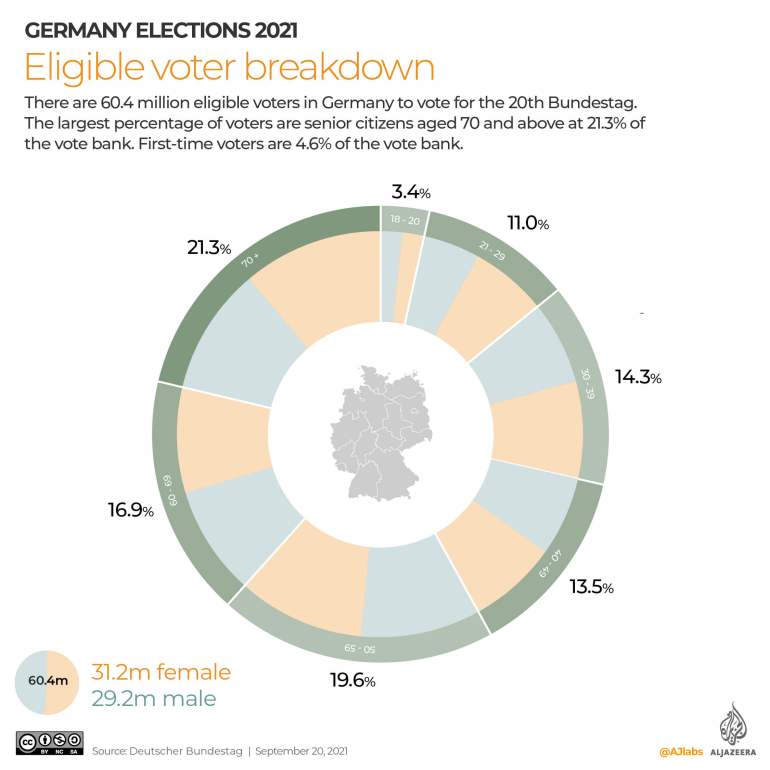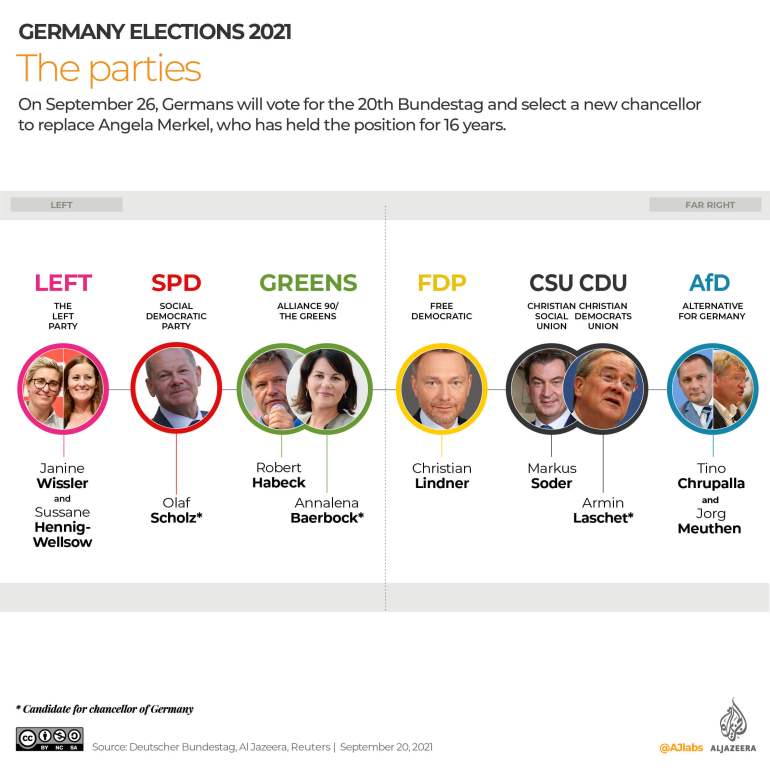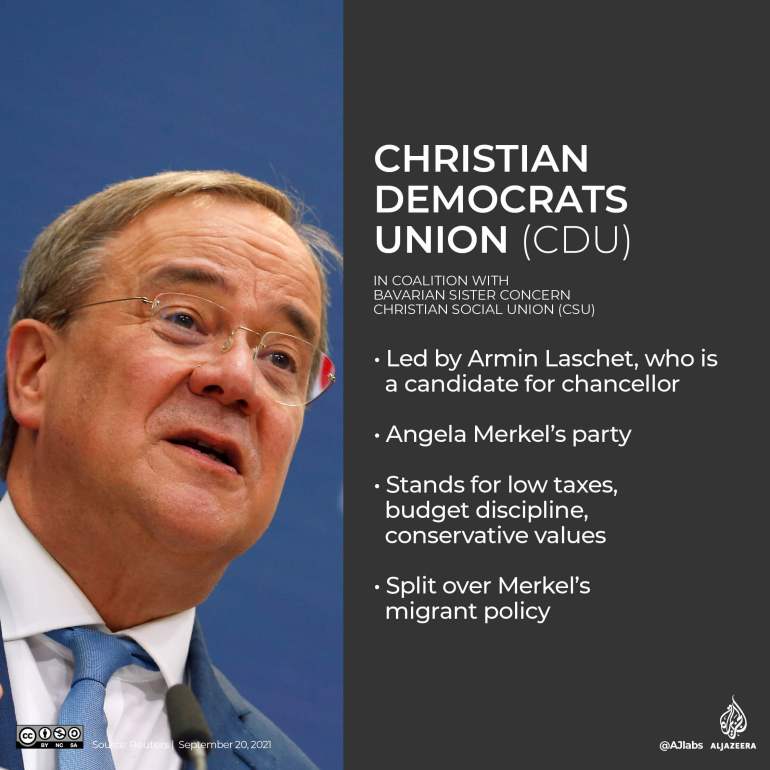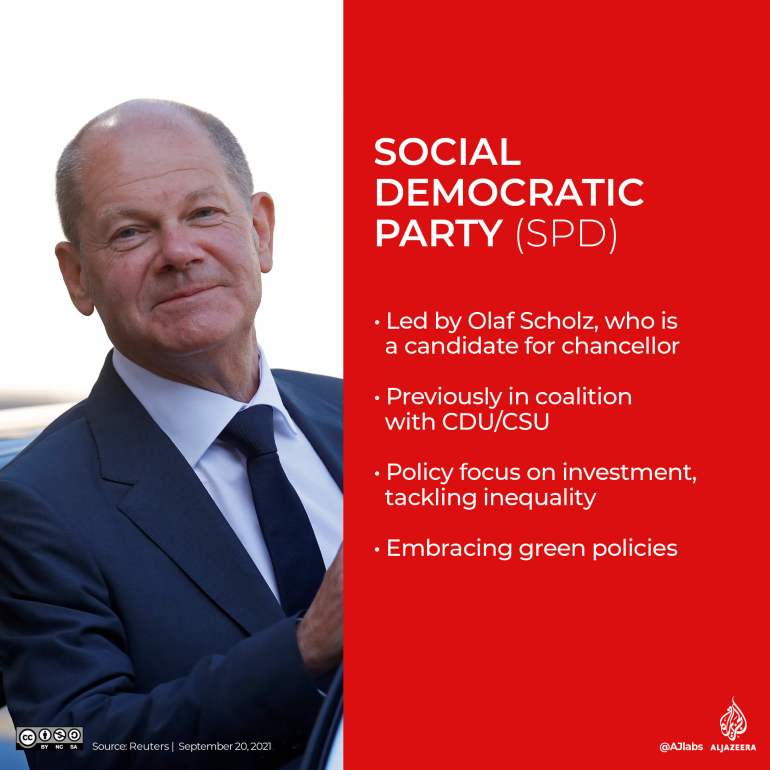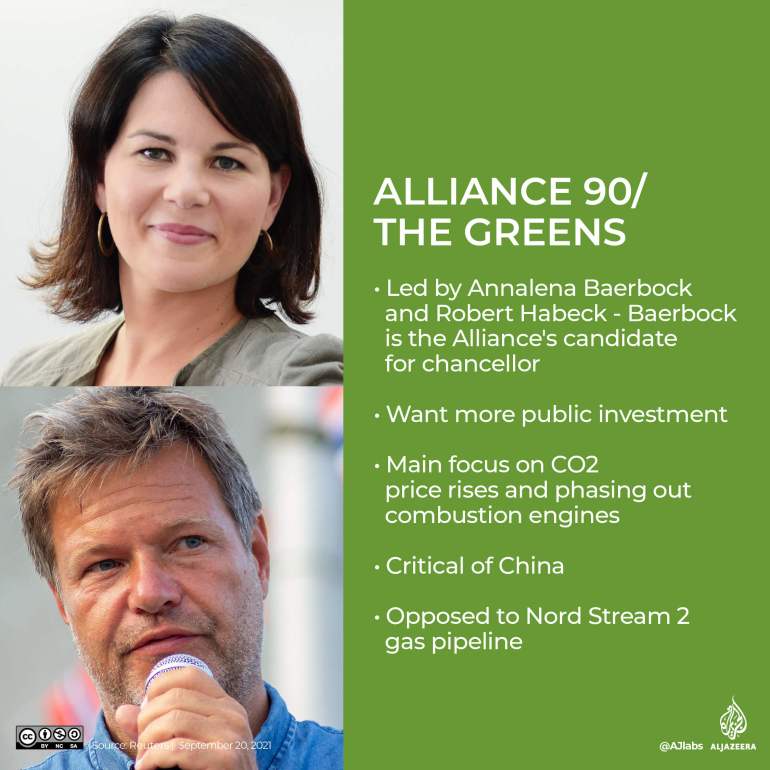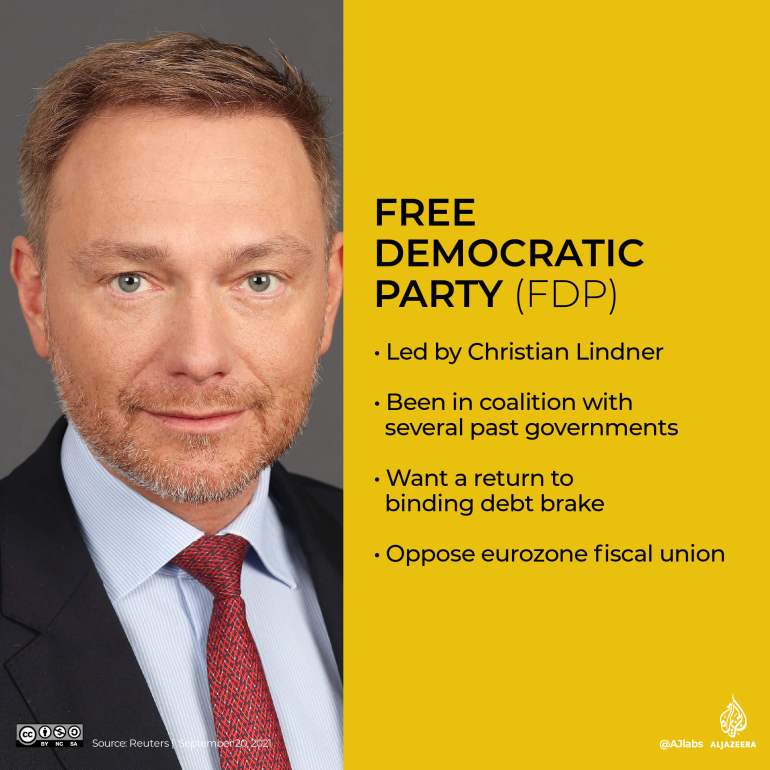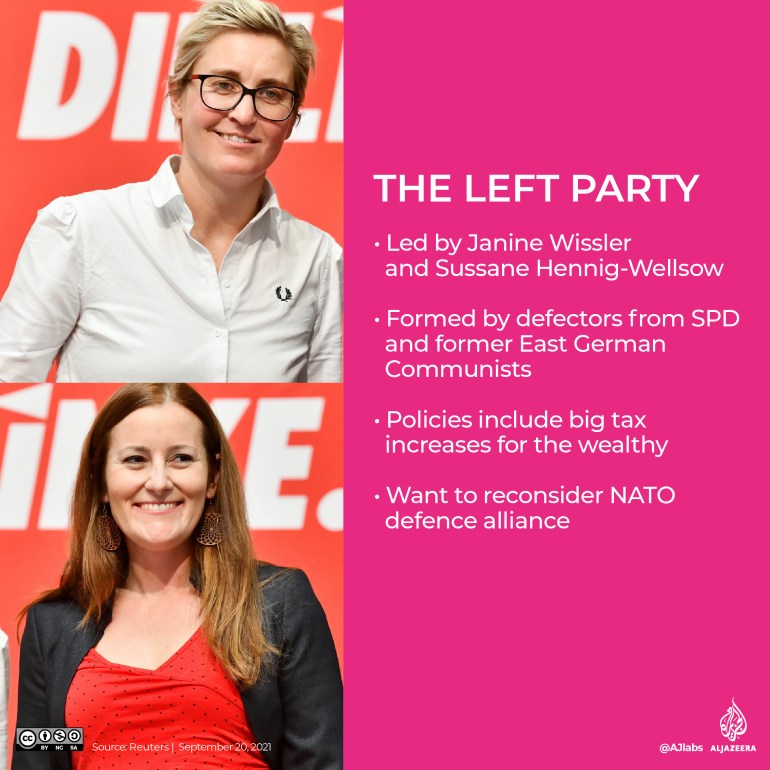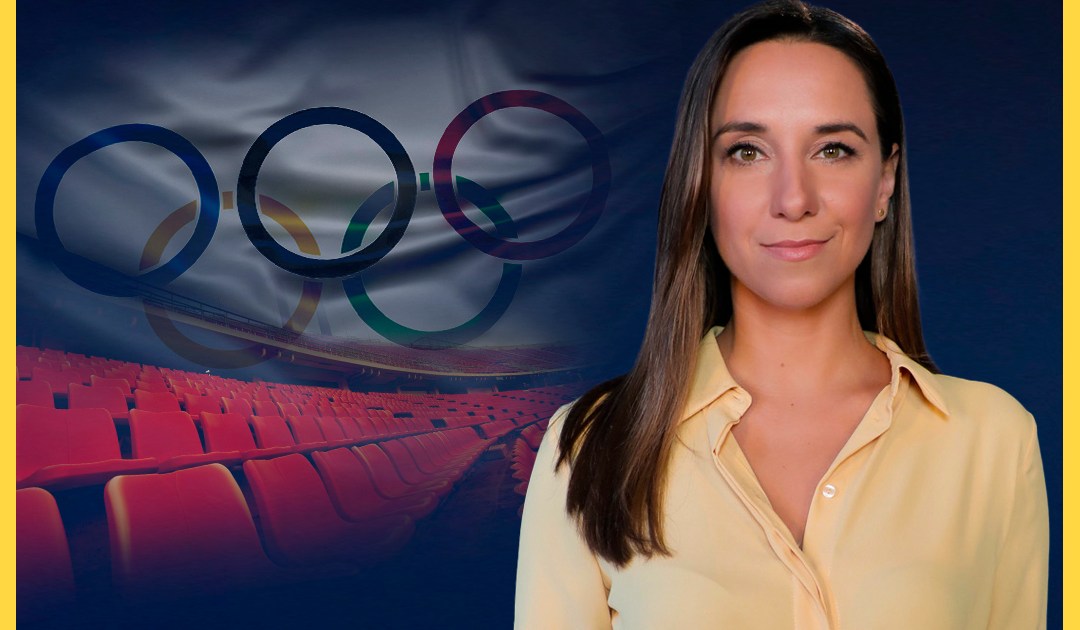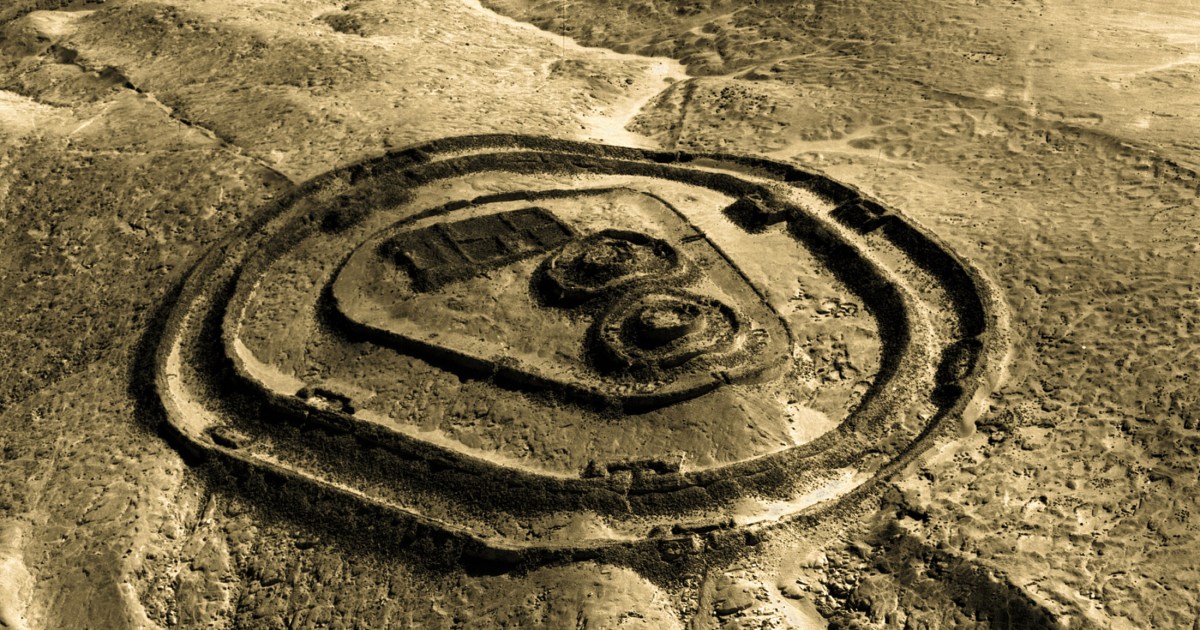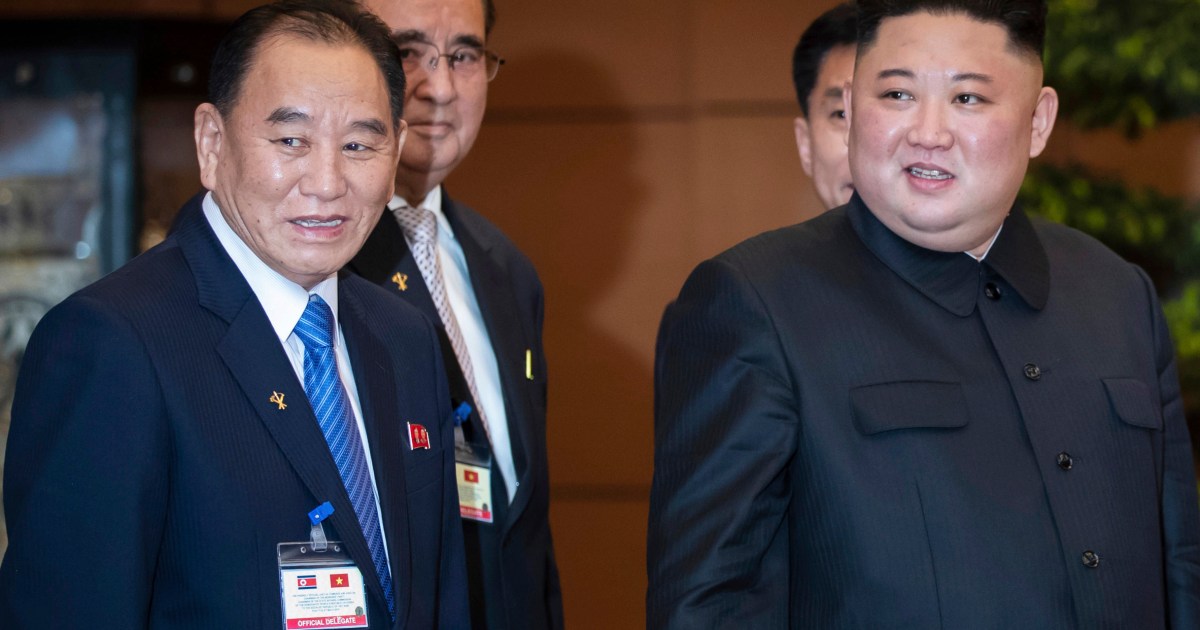[ad_1]
On September 26, 60.4 million eligible voters in Germany will go to the polls to elect the 20th Bundestag.
For the first time since German reunification, Conservative Chancellor Angela Merkel will not be a candidate. She led the Christian Democratic Union of Germany (CDU) for 20 years and has been in power for 16 years.
The campaign period focused on issues such as the climate crisis and the reduction of carbon emissions, the fight against the COVID-19 pandemic and the economic fallout it has unleashed, social welfare, l innovation in digitization and government support for the European Union and NATO.
How these issues are tackled will depend on the new government, which should be a coalition. According to international security consultancy RANE, opinion polls suggest a close bond between the various parties, and negotiations to form a coalition could take time.
Three parties lead the polls: the conservative CDU and its sister party Bavarian, the Christian Social Union of Bavaria (CSU), the progressive Social Democratic Party of Germany (SPD) and the Green Greens.
Others, including the smaller, pro-business Free Democratic Party (FDP) and the far-right Alternative for Germany (AfD) are also running for seats, but it is unlikely that one of them reaches the 5% threshold required to be represented.
The current German parliament
In 2013, it took almost three months to form a government. After the 2017 elections, negotiations lasted almost six months.
The new government is expected to include moderate center-left and center-right parties.
Currently, the SPD leads our poll aggregate by 4 points against the CDU / CSU after increasing by more than 9 points in the past eight weeks.
How does Germany vote?
The German parliament is made up of the Bundestag, the national parliament, which has federal legislative power and is directly elected by the German people, and the Bundesrat, which represents the states (Lander).
Germany has a two-vote system in which eligible citizens vote twice, first for their representative and then for a party. The two votes do not have to be for the same party.
The directly elected candidates constitute 299 seats of the total, and another 299 are allocated according to the representation of the vote. The minimum requirement to get a share of the seats, a party must hold at least 5 percent of the total vote.
The usual number of seats in the Bundestag is 598, but to ensure that the share of seats reflects the proportion of votes a party receives, 111 seats were added in 2017, bringing the total to 709.
The Federal Chancellor is chosen by all the members of the Bundestag. The Chancellor is the head of parliament and government. The President of Germany is a ceremonial position.
Who votes?
According to the federal returning officer, there are approximately 2.8 million first-time voters, representing 4.6 percent of the vote bank.
Who are the main leaders?
There are six main parties in the Bundestag elections.
CDU / CSU headed by Armin Laschet
The traditionally Catholic conservative bloc is made up of Chancellor Angela Merkel’s Christian Democrats (CDU) and her sister Bavarian party, the Christian Social Union. The “Union”, as it is usually called, is synonymous with low taxes, budgetary discipline and conservative-liberal values. Members were deeply divided over Merkel’s migration policy in 2015 which cost them votes, but now, after 16 years in power, the party is looking for a way to reinvent its electoral success.
SPD led by Olaf Scholz
Germany’s oldest party and the main center-left force. As a junior partner in a coalition with Merkel’s conservatives for 12 of the past 16 years, the SPD has struggled to forge a clear identity. Its policy is focused on investment and the fight against inequalities and the party has recently adopted greener policies.
The leadership duo of Saskia Esken and Norbert Walter-Borjans sided with the party on the left after taking power in 2019, but it was the candidacy of centrist Finance Minister Olaf Scholz that gave the party a late boost. in the polls.
The Greens led by Annalena Baerbock
Arising from the peace movement of the 1960s, the party first took part in government in 1998, sharing power with SPD Chancellor Gerhard Schroeder. Under the leadership of Annalena Baerbock and Robert Habeck, the Greens have broadened their appeal by developing clearer social and economic policies, such as reforming strict fiscal rules to allow more public investment. This complements their main goal of fighting climate change which they aim to achieve by increasing the price of CO2 more quickly and phasing out combustion engines. He criticizes China and opposes the Nord Stream 2 gas pipeline.
FDP headed by Christian Lindner
Nicknamed the Party of Doctors and Dentists, the FDP campaigns for lower taxes and deregulation. Often kingmaker, the party has shared power with the Conservatives and the SPD for the past 70 years. Current policies are closer to those of the CDU / CSU. They want to return to a binding deleveraging and oppose a fiscal union of the euro zone. In terms of the environment, they favor incentives via CO2 emission allowance trading systems.
On the left, Janine Wissler and Sussane Henning-Wellsow
A leftist party formed by defectors from the SPD and remnants of East German communism, it struggled to gain broad support from voters. The policies include significant tax increases for the rich and rethinking the NATO defense alliance.
AfD led by Joerg Meuthen and Tino Chrupalla
Created as an anti-euro party in 2013 at the height of the eurozone debt crisis, it has removed its leadership team several times and has turned into an anti-immigrant group with extreme members. right in its ranks. The party is also welcoming climate change and COVID-19 deniers. The AfD took advantage of the 2015 migrant crisis to become the third party in the 2017 elections and is the official parliamentary opposition.
[ad_2]
Source Link





